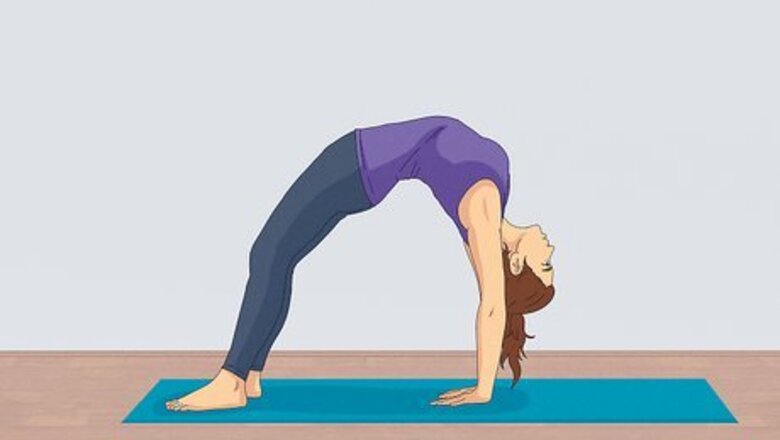
views
X
Research source
If you're having difficulty coming out of the back bend, however, you may not be ready to do the full move. Try some other yoga poses and exercises to slowly work your way up to mastering the full back bend.
Moving Out of Your Back Bend
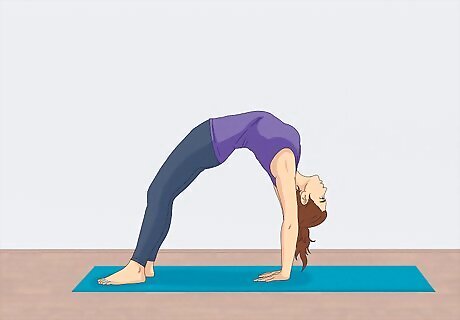
Get into position. The most common back bend is a lying back bend. Start by lying on your back with your knees bent. Position your feet close to your hips and your hands palms-down next to your ears. Grip the mat with your feet. Check that you are keeping your elbows roughly shoulder-width apart. If you can, try to flex your legs and arms until they straighten a bit. It is not a good idea to do a back bend while wearing socks or something else that might make you weaken your contact with the floor. To do a standing back bend, stand straight your feet wider than hips width apart. With your knees gently bent, lean backwards until your palms are flat against the mat. Use a spotter if you are attempting this type of back bend.
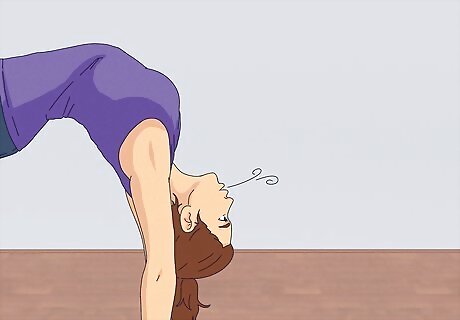
Exhale. When you get to the point where you can regulate your breathing, concentrate on pushing your air out in a controlled exhale. As you do this, start to relax your body and move out of your back bend. Keep breathing in and out smoothly even after you are done. Try to come out of your back bend in one exhaled breath. But, if you need to do another deep inhale/exhale as you release, that’s okay. Even as you relax your body, make sure to hold your core muscles tight. This will keep you from doing anything that might injure your back.
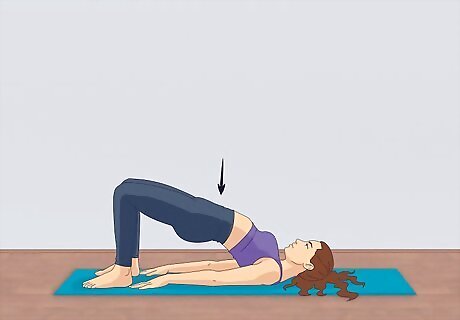
Lower your body towards the ground slowly. Release your muscles, especially those in your abdomen, and feel yourself moving slowly out of the back bend. As you come down you may need to slide your hands or feet out a bit. Keep exhaling as you do this. Don’t just flop down. It’s much safer to take your time.
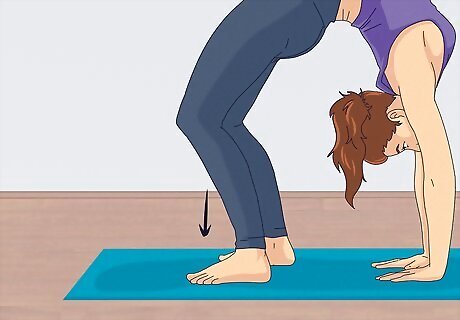
Try to put all your wait on your legs. This helps with bringing your arms up.
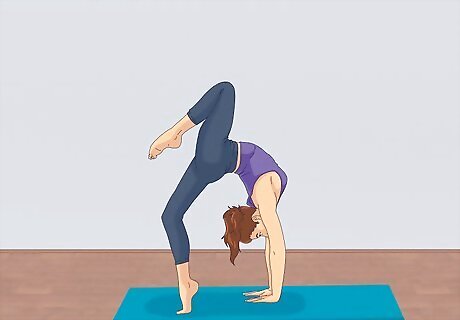
Get some momentum from do a handstand into a bridge or a front walkover. Either one will help. If you feel like your legs begin to splay out a bit as you release your pose, try putting a foam block between your knees next time. If you squeeze it as you go down, it will keep your body in a controlled position.
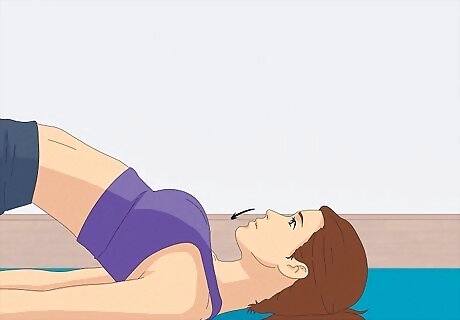
Push your chin into your chest. This helps to relieve tension in your neck. Otherwise, your neck muscles might flex and do too much work as you lower yourself to the mat. It’s not necessary for your chin to maintain total contact with your collarbone, but you should keep it tucked in.
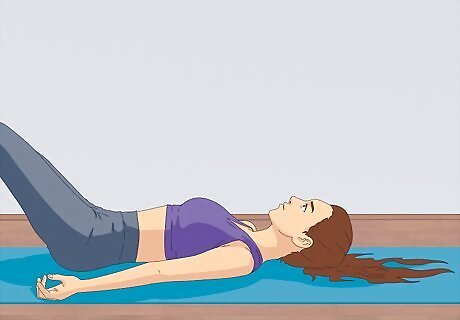
Unroll your back onto the mat. Touch your neck to the mat first, followed by the rest of your spine. It’s helpful if you concentrate on slowly lowering each inch of your back downward. This might be tough to do, especially if you are tired. It’s okay, just keep practicing and you’ll get it.
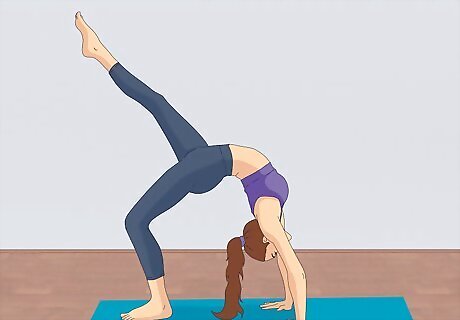
Perform a kick-over if you are advanced. This is a release move that you have to be careful with, so only do it with a spotter. As you are in a back bend, kick both legs over your head. You should use enough force to fully push your feet over you, so that they land firmly on the ground. If you try to do this but only get one leg up and fall back down, just take a few breaths and try again.
Avoiding Any Problems
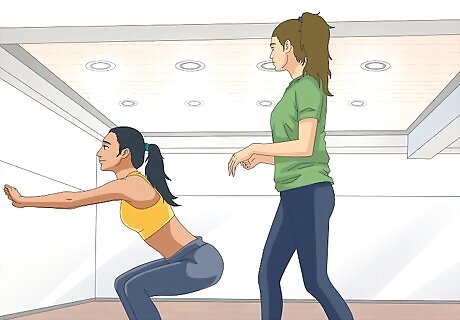
Work with a yoga or gymnastics instructor. You can take a class and get a professional to help you out every step of the way. They can also suggest alternative moves and provide spotting for you. In a class setting just go at your own pace and don’t try any advanced releases, like a kick over, unless you are comfortable.
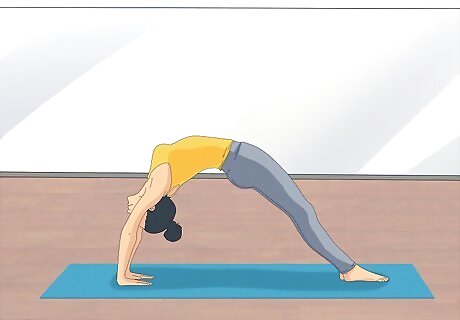
Practice daily. To feel really comfortable moving out of a back bend, you’ll need to do it often. Sometimes you might hold them for just a few seconds, but try to extend your time to twenty seconds plus if possible.
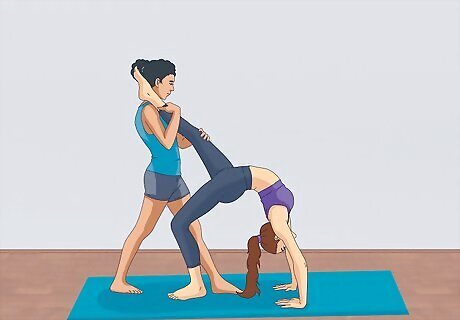
Work with a partner. This is a great way to make a back bend even safer to perform. Get a friend from gymnastics or yoga and ask them to do a few moves with you. In particular, tell them that you’d like them to spot you as you go up and down in a back bend. They should stand close to you, so that they can support you if necessary.
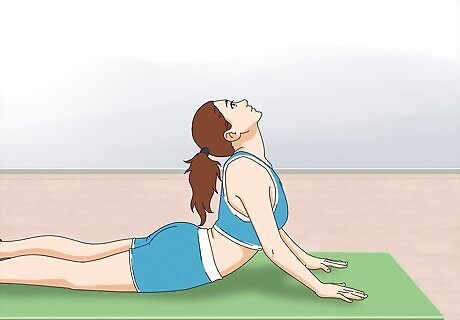
Warm up before you begin. Cardio, such as knee lifts, arm circles, and jumping jacks, can help prepare you for this exercise. If you are interested in yoga, you can do a few basic poses, such as bridge or cobra pose. It’s also a good idea to do a few cool down moves after releasing your back bend. For example, lay down on your back and slowly pull your knees toward your chest.
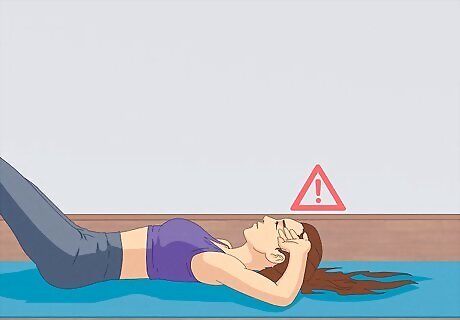
Know the signs of a problem mid-bend. If your muscles start to shake or you feel as if you are about to lose control and drop, then it’s time to do a controlled release of your back bend. The same goes if you feel dizzy or your head begins to hurt. When in doubt, be safe and listen to your body. Be aware that some people have been seriously injured doing back bends.
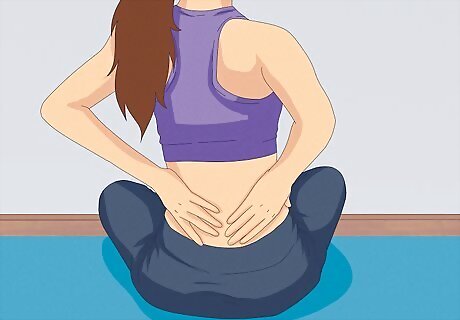
Don’t do a back bend if you are injured or pregnant. Back bends are not a good idea if you have any type of back, neck, or spinal injury. Pregnant women should also avoid them and can do alternative poses instead, such as lay down stretches. If you are concerned, go ahead and talk with your doctor before trying it out. Children under five should also not do back bends. They usually do not have the muscle development possible to safely control the move.
Working up to a Back Bend
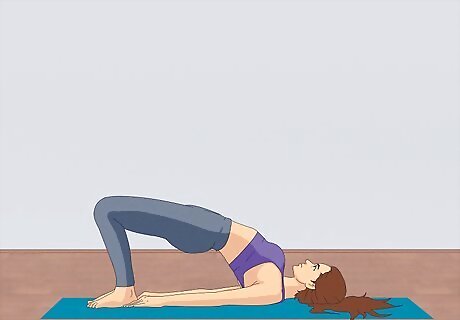
Open up your hips with a bridge pose. Lie on your back with your knees bent. Position your feet close to your hips and your hands palms-down next to your ears. Take a deep breath inwards and lift up your tailbone. Roll up each vertebrae in your back until the top of your head hits the mat. Your shoulders and head should rest on the ground. Hold this move for eight to ten breaths before rolling back down. You should master this move before attempting a back bend.
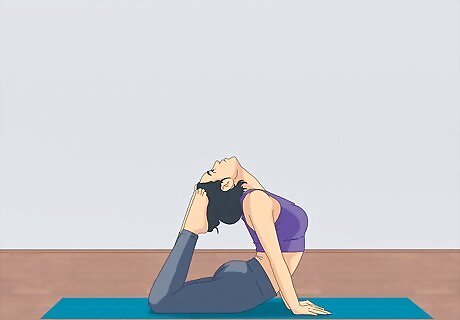
Try the cobra pose. Lie on your belly. Press your palms against the ground with your elbows tucked into your body. Lift your forehead first, then slowly roll up your neck and chest. Keep your neck and spine long as you take ten breaths. Slowly lower yourself back to a prone position.
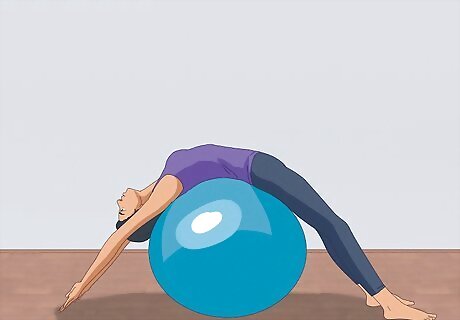
Bend over a Swiss ball instead. If you struggle with coming out of a back bend, it may be better for you to just use a Swiss ball. Do a standing back bend over the ball, using the ball to support your spine. You should still want to use a spotter.
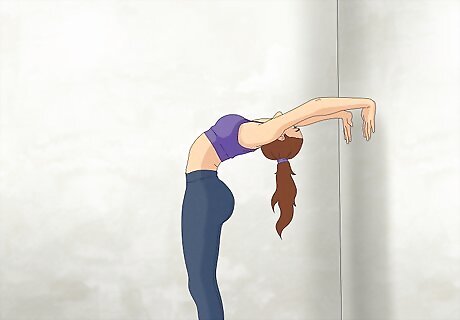
Work your way down a wall if you need to practice. If you want to start off with something a little easier than the standard backbend, use a wall as an aid. Instead of placing your hands on the mat, use your hands to gradually lower yourself down the wall until you are in a partial back bend. Then, when you are done, walk your hands back up the wall until you are standing. When you feel as if the wall is no longer challenging your muscles, you may be ready to move on to an independent back bend. Only go as far down the wall as you are able. Do not push yourself.
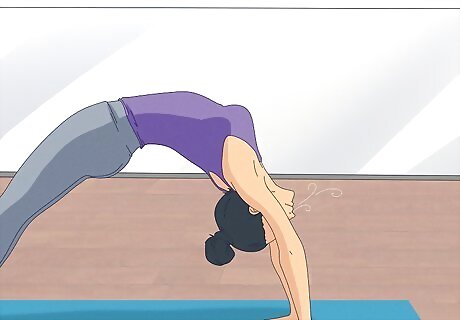
Monitor your breathing. It’s very tempting to seize up and take shorter, faster breaths when in the back bend position. Instead, concentrate on taking deep breaths in through your nose and exhaling out of your mouth.



















Comments
0 comment